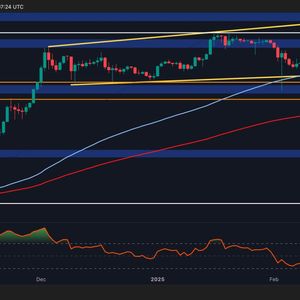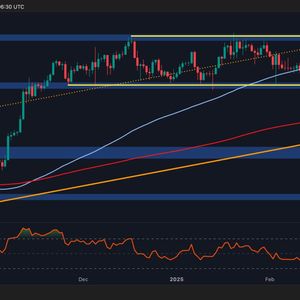Are you feeling the tremors in the cryptocurrency market? It’s not just crypto that’s experiencing volatility; the traditional financial world is also seeing significant shifts. Right now, all eyes are on Asia’s foreign exchange (FX) markets, which are under considerable pressure. Why? Because of a potent combination: a decidedly hawkish stance from the US Federal Reserve (Fed) and surprisingly robust inflation figures coming out of Japan. Let’s dive into what’s causing this stir and what it could mean for you. Why Are Asia FX Markets Feeling the Heat? The current weakness in Asia FX markets is primarily driven by two major factors: The Hawkish Fed Outlook: The Federal Reserve in the United States has signaled a continued commitment to aggressively combatting inflation. This ‘hawkish’ stance implies that the Fed is likely to keep interest rates elevated, and potentially raise them further, for a longer period than initially anticipated. What does this mean for Asia? Higher US interest rates make dollar-denominated assets more attractive to investors. This increased demand for the US dollar leads to capital outflows from Asian economies, weakening their respective currencies against the dollar. Japan’s Inflation Surprise: While many developed economies are battling high inflation, Japan has been an outlier for years, struggling with deflation. However, recent data shows a significant surge in Japan inflation data , with the Consumer Price Index (CPI) exceeding expectations. This unexpected inflationary pressure in Japan is fueling speculation that the Bank of Japan (BOJ) might be forced to abandon its ultra-loose monetary policy and consider interest rate hikes . Let’s break down these factors further and understand their individual and combined impact. The Relentless Rise of the US Dollar: Hawkish Fed in Focus The Federal Reserve’s influence on global currency markets is undeniable. When the Fed adopts a hawkish Hawkish Fed outlook , it sends ripples across the globe. Here’s why: Higher Interest Rates, Stronger Dollar: As the Fed raises interest rates, the yield on US Treasury bonds increases. This makes US bonds more appealing to global investors seeking higher returns. To invest in these bonds, investors need US dollars, thus increasing demand for the dollar and driving up its value. Capital Flows and Emerging Markets: Emerging markets in Asia, which often rely on foreign investment, become less attractive when US interest rates are high. Investors may pull their capital out of Asian markets to invest in safer, higher-yielding US assets. This capital outflow puts downward pressure on Asian currencies. Debt Burden for Dollar-Denominated Debt: Many Asian countries and corporations hold debt denominated in US dollars. A stronger dollar makes servicing this debt more expensive in local currency terms, potentially straining their economies. Essentially, a hawkish Fed outlook acts like a magnet, pulling capital towards the US and away from other regions, including Asia. This dynamic is a major headwind for Asian currencies. Japan’s Inflation Jolt: A Game Changer for the Yen? For decades, Japan has been synonymous with deflation. But the recent surge in Japan inflation data is challenging this long-held narrative. What’s driving this change and why is it significant? Global Inflationary Pressures: Like the rest of the world, Japan is feeling the impact of global supply chain disruptions and higher energy prices, exacerbated by geopolitical events. These external factors are contributing to rising prices in Japan. Domestic Demand Revival?: There are nascent signs that domestic demand in Japan might be picking up, albeit gradually. If sustained, this could further fuel inflationary pressures. BOJ Policy Shift in Sight?: The Bank of Japan has stubbornly stuck to its ultra-loose monetary policy, including negative interest rates, while other central banks have been aggressively tightening. However, persistent inflation could force the BOJ to reconsider its stance. Speculation is mounting about potential interest rate hikes by the BOJ, which would be a significant policy shift. A potential shift in BOJ policy is a crucial factor for Asian FX. If the BOJ hints at or actually implements rate hikes, it could strengthen the Japanese Yen (JPY). However, the broader impact on Asia FX is complex and depends on various factors, including the pace of BOJ tightening and the overall global economic environment. Currency Volatility: The New Normal for Asia? The combination of a hawkish Fed and Japan’s inflation surprise is contributing to heightened currency volatility in Asia. What does this mean for businesses and investors? Impact of Currency Volatility Description Increased Uncertainty: Businesses operating in Asia face greater uncertainty in their financial planning. Fluctuating exchange rates can impact import and export costs, profitability, and investment decisions. Investment Risks: Investors in Asian assets are exposed to higher currency risks. Unfavorable exchange rate movements can erode investment returns, even if the underlying assets perform well in local currency terms. Potential for Capital Flight: In times of high volatility, there’s a greater risk of capital flight from Asian economies, further weakening their currencies and potentially destabilizing financial markets. Opportunities for Forex Trading: For those involved in forex trading, increased volatility can present opportunities for profit, but it also comes with higher risks. Navigating the Asian FX Storm: Actionable Insights So, what can businesses and individuals do to navigate this period of currency volatility in Asia? Stay Informed: Keep a close watch on developments related to the Fed’s monetary policy, Japan’s inflation data, and BOJ policy signals. Regularly monitor currency market movements and analysis from reputable sources. Risk Management: Businesses should review their foreign exchange risk management strategies. This might involve hedging currency exposures using financial instruments or adjusting operational strategies to mitigate currency risks. Diversification: Investors should consider diversifying their portfolios across different asset classes and currencies to reduce the impact of currency volatility in any single market. Seek Expert Advice: Consult with financial advisors or forex specialists to get tailored guidance based on your specific circumstances and risk tolerance. Looking Ahead: What’s Next for Asia FX? The outlook for Asia FX markets remains uncertain and largely dependent on the future actions of the Federal Reserve and the Bank of Japan, as well as the evolution of global inflation. If the Fed continues on its hawkish path and Japan’s inflation persists, Asian currencies could face further headwinds. However, any signs of a less aggressive Fed or a slowdown in global inflation could provide some relief. For cryptocurrency enthusiasts, understanding these macroeconomic trends is crucial. Currency market dynamics can indirectly impact crypto markets, influencing investor sentiment and capital flows. Staying informed about global economic factors is just as important as keeping up with the latest blockchain innovations. To learn more about the latest Forex market trends, explore our article on key developments shaping currency volatility and institutional adoption.

















